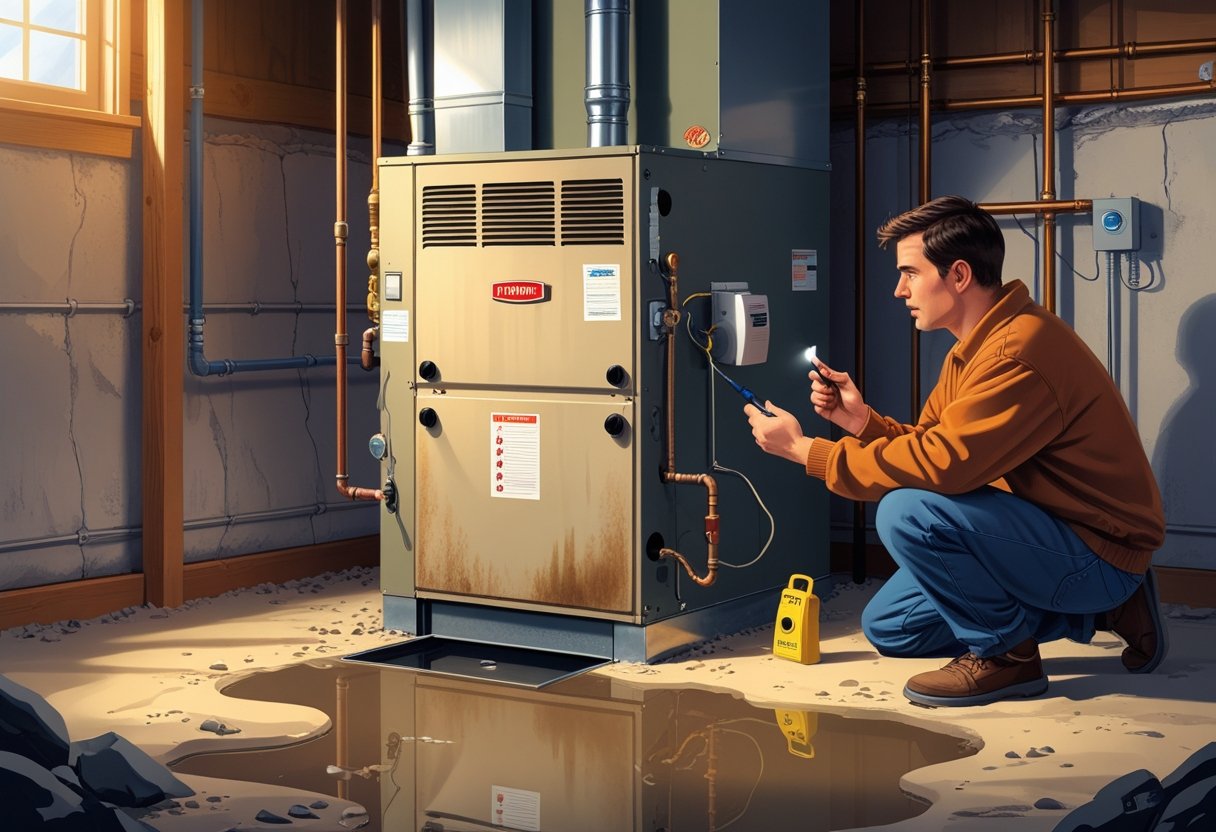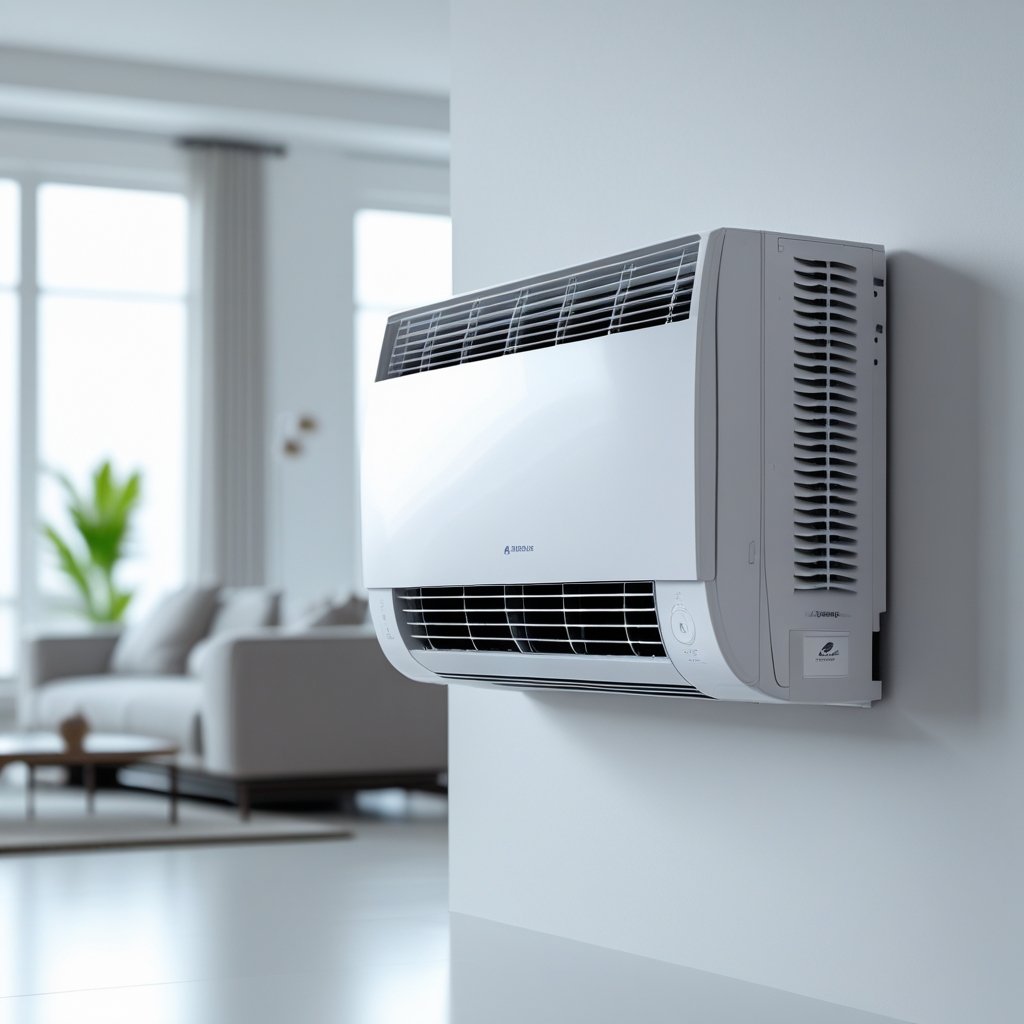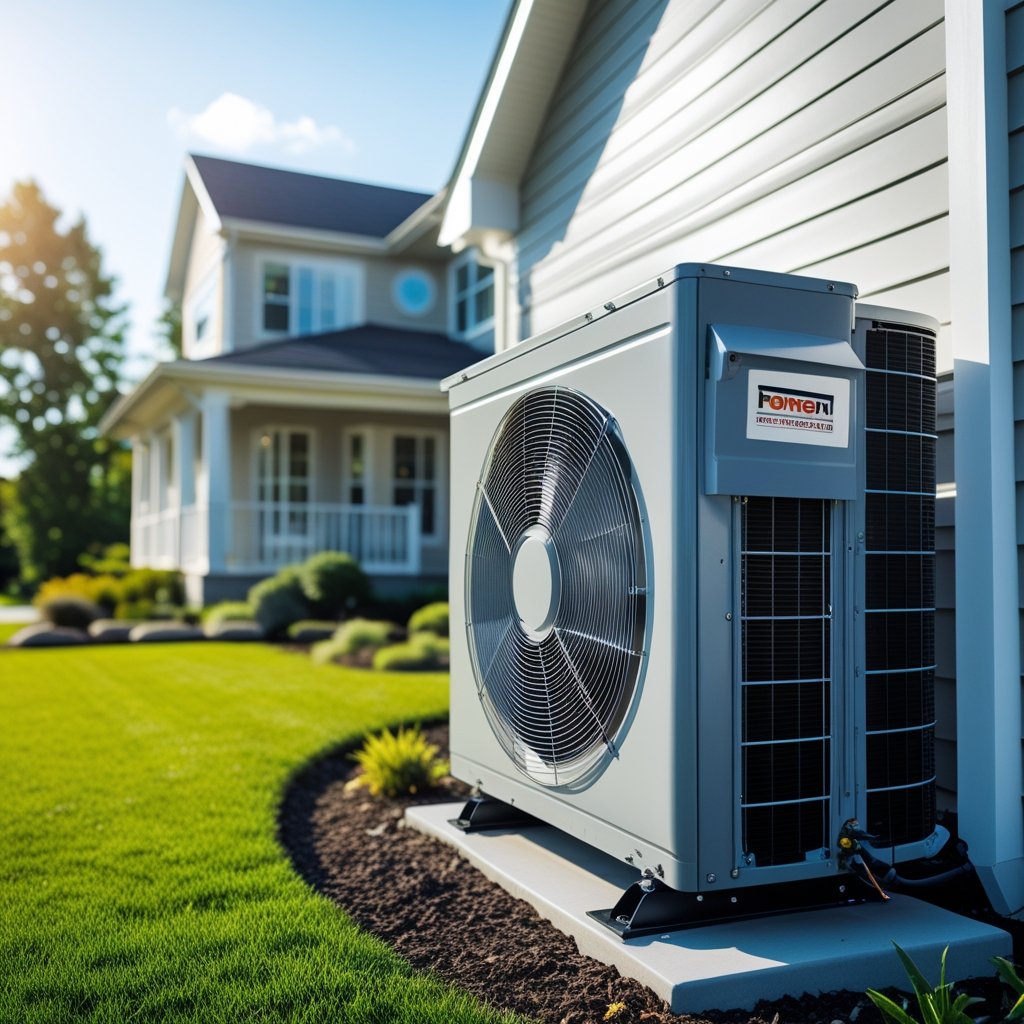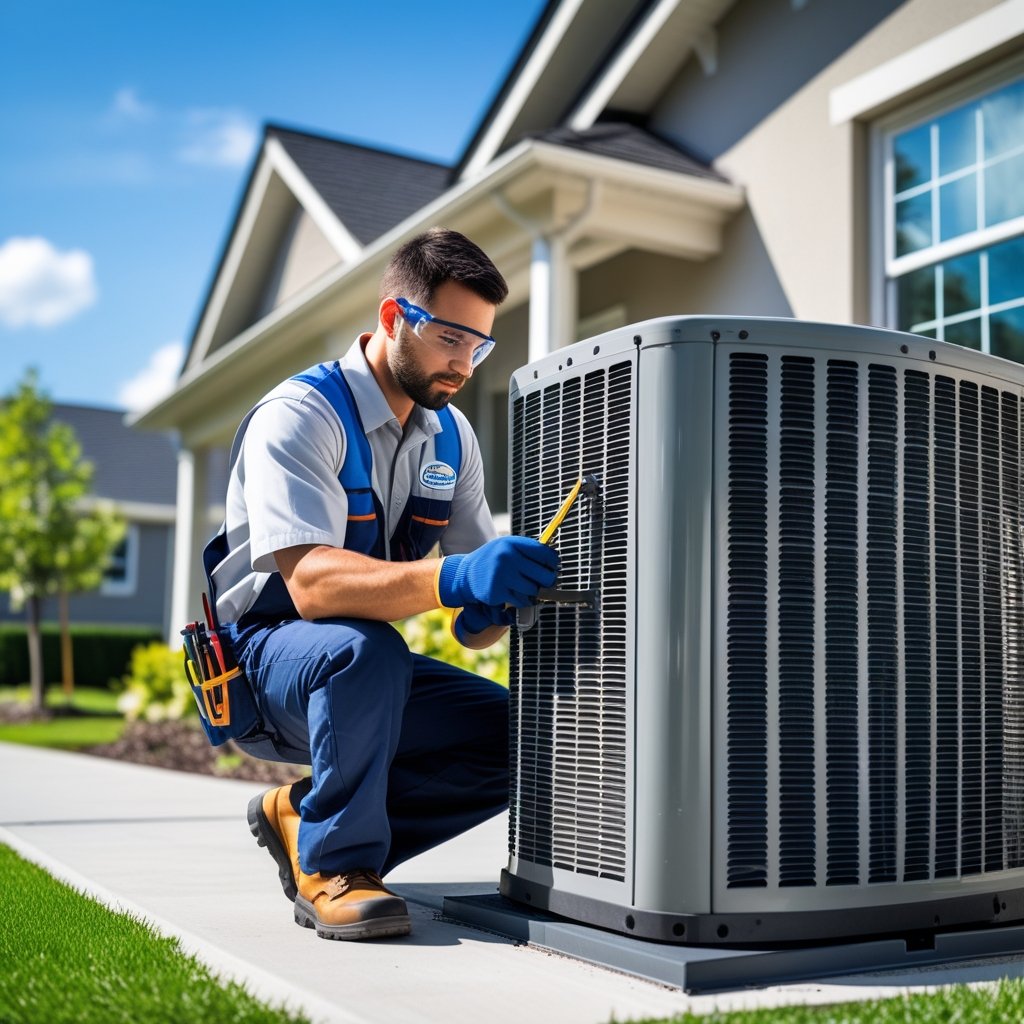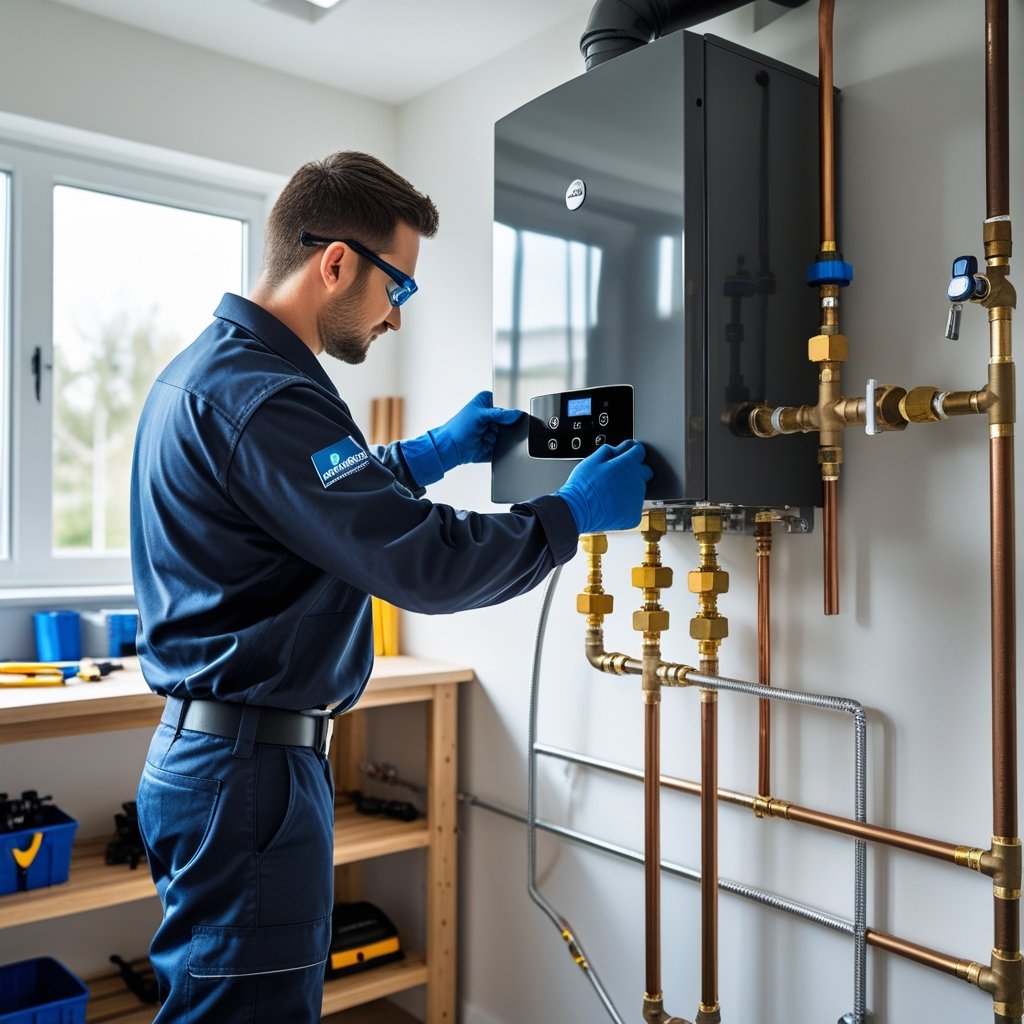Determining when to replace your furnace is crucial, especially in Pennsylvania where winters can be harsh. You should consider replacing your furnace if it is over 15 years old, frequently breaks down, or the repair costs exceed 50% of a new unit's price. Regular maintenance is important, but sometimes investing in a new furnace saves more money and ensures a reliable heat source.
Leo Kob Co. understands the challenges homeowners face when their heating system no longer meets their needs. It's essential to recognize the signs that your furnace may be nearing the end of its lifespan. Look for increasing energy bills, inconsistent heating, and unusual noises, as these can indicate deeper issues.
If you find yourself questioning whether to repair or replace, you're not alone. The decision can be overwhelming, but being informed about warning signs and options can make the process smoother. Leo Kob Co. is here to guide you through this critical decision, ensuring your home stays warm and comfortable.
Key Signs It’s Time to Replace Your Furnace in Pennsylvania
Recognizing when to replace your furnace is crucial for maintaining comfort and efficiency in your home. Several indicators can signal that your old furnace may no longer meet your needs, prompting considerations for replacement.
Age-Related Indicators
Furnaces typically have a lifespan of 15 to 20 years. If yours is approaching this age range, it’s time to evaluate its performance. An aging furnace loses efficiency and may struggle to keep up with heating demands. The technology in newer units often provides better energy efficiency, which can save you money on heating costs.
Consider factors like how often you’ve needed repairs. If your furnace is nearing the end of its life but still requires attention, replacement might be more prudent. Regular maintenance from professionals like Leo Kob Co. can help extend your furnace's life, but eventually, age will catch up with even the best systems.
Escalating Repair Needs
If you find yourself facing constant repairs, it could be more cost-effective to replace your furnace rather than continue fixing it. Frequent repairs can add up and lead to frustration. A good rule of thumb is to consider replacement if your repair costs exceed half the cost of a new unit.
In Pennsylvania's harsh winters, a reliable heating system is vital. If your furnace is constantly in need of repair, it might impact not only your comfort but also your peace of mind. Leo Kob Co. can assist with evaluating whether repairs or replacement is the best route for you.
Rising Heating Bills
You may notice your energy bills increasing over time, which can indicate that your furnace is becoming less efficient. If your heating costs are rising despite steady use, it’s a sign that your furnace is underperforming. Older appliances often work harder to produce the same heat, leading to wasted energy and, consequently, higher bills.
Consider tracking your heating expenses over a few months to see if there's a consistent upward trend. If so, it’s worth exploring your options for a more efficient model. Investing in a newer furnace can significantly lower your heating costs in the long run.
Frequent Breakdowns
Experiencing multiple breakdowns during a heating season is alarming and inconvenient. If your furnace fails to operate consistently, this could indicate underlying issues that require more than just minor repairs.
This can be especially problematic during the coldest months when reliable heat is necessary. Frequent outages are a strong signal that it might be time for a replacement. Quality service providers like Leo Kob Co. understand the urgency and can provide you with the best solutions to ensure your home stays warm and comfortable.
Performance Issues and Safety Concerns
When evaluating the need to replace your furnace, pay careful attention to performance issues and safety concerns. These factors can significantly impact your heating system's efficiency and your home's safety.
Uneven Home Heating Patterns
If you notice that certain rooms in your home are significantly colder than others, it may indicate a problem with your furnace. This uneven heating can result from factors such as malfunctioning ductwork or an aging blower motor.
In many cases, clogging in the ducts can restrict airflow, leading to cold spots. If this issue persists, it's a sign that your heating system might require more than just a simple repair. Trustworthy technicians, like those from Leo Kob Co., can assess your heating setup to determine whether it’s more cost-effective to repair or replace your furnace.
Strange Sounds and Odors
Unusual noises or smells coming from your furnace should never be ignored. Sounds like rattling, banging, or squeaking can indicate that components are wearing out or there are loose parts inside the unit.
Odors, particularly those that are burning or gas-like, are especially concerning. They may suggest overheating parts or even gas leaks. If you encounter any strange issues, you should contact professionals immediately to ensure safety and proper functioning of your heating system. Leo Kob Co. is committed to addressing these concerns with thorough inspections and transparent assessments.
Carbon Monoxide Leaks and Cracked Heat Exchangers
Carbon monoxide is a silent killer, and a malfunctioning furnace can lead to dangerous leaks. One of the most common causes is a cracked heat exchanger, which prevents proper combustion and leads to gas escaping into your home.
If you suspect any carbon monoxide leaks, it is crucial to take immediate action. Symptoms of carbon monoxide poisoning include headaches, dizziness, and confusion. Regular maintenance can help identify cracks before they become hazardous. Ensure that your furnace is periodically inspected to promote safety and maintain efficiency. For residents in Pennsylvania, regular check-ups from a reliable service provider like Leo Kob Co. can help protect your family from these hidden dangers.
Evaluating Furnace Types and Energy Efficiency Options
Choosing the right furnace type involves understanding various options and their energy efficiency features. Different furnace types have unique benefits, and selecting an energy-efficient model can lead to significant cost savings.
Gas, Oil, and Electric Furnaces
Gas furnaces are among the most popular choices for homeowners. They offer quick heating and are generally more energy-efficient than oil or electric models. Gas is often cheaper than electricity, making it a cost-effective option in the long run.
Oil furnaces are less common but still relevant, especially in rural areas. They provide a powerful heating experience but can have higher operational costs due to fluctuating oil prices.
Electric furnaces, while easy to install and maintain, tend to be less efficient. Their operational costs can be high depending on local energy rates. Each furnace type has its advantages, making it essential to consider your home's specific heating needs when deciding.
Comparing Heat Pumps and AC Systems
Heat pumps offer a dual function—heating in the winter and cooling in the summer. They work by transferring heat rather than generating it, allowing for lower energy costs. Heat pumps can be particularly beneficial in more moderate climates and have become a popular energy-efficient alternative.
In contrast, traditional AC systems are designed solely for cooling. They generally pair with gas or oil furnaces during colder months. While effective, they lack the energy efficiency of heat pumps, especially in regions where winters can be harsh.
When comparing these systems, consider installation costs, maintenance, and your typical energy expenses throughout the year.
Energy Star Certified Models
Energy Star certified models meet stringent energy efficiency guidelines. Investing in one of these furnaces can significantly reduce your energy costs while also minimizing your environmental impact. These models offer advantages like improved insulation and better combustion efficiency.
When looking for replacements, consider checking your options against the Energy Star label. A certified unit can also qualify for rebates and incentives, providing you with additional savings.
For more information about types of furnaces and energy-efficient options in South Central Pennsylvania, consult with experts at Leo Kob Co. Their extensive experience can help you make an informed decision that's right for your home.
Cost Considerations and Budget Planning for Furnace Replacement
When planning for a furnace replacement, understanding the associated costs is vital. This section discusses installation and labor costs, estimating total expenses, and ways to enhance energy efficiency that can lead to savings over time.
Furnace Installation and Labor Costs
The price of a new furnace can vary significantly based on factors like type and size. Generally, the installation cost ranges from $2,500 to $7,500. This includes the furnace, necessary materials, and labor.
Labor costs may account for approximately 20% to 30% of the total expense. Factors influencing labor rates include technician experience and local market conditions. Working with experienced professionals like Leo Kob Co. ensures quality installation, leading to better long-term performance and reliability of your system.
Estimating Replacement Expenses
To accurately estimate your replacement expenses, consider several key components. First, get multiple quotes to understand the range of pricing options. Include additional costs such as permits or potential modifications to your existing ductwork.
Key expenses to account for:
- Furnace Cost: $2,500 - $7,500 (varies by model).
- Installation Fees: Around 20% – 30% of total costs.
- Permit Fees: Depending on local regulations.
- Ductwork Modifications: Costs may vary based on your home’s layout.
It’s also wise to set aside a buffer fund for unforeseen issues that might arise during installation.
Energy Efficiency Upgrades and Savings
Investing in energy-efficient models may raise your initial costs but can yield long-term savings through reduced utility bills. Many modern furnaces qualify for rebates, depending on efficiency ratings.
Benefits of energy-efficient upgrades include:
- Lower Monthly Bills: High-efficiency units consume less energy.
- Rebate Eligibility: Check if your new unit qualifies for local or federal rebates.
- Long-term Savings: Efficient models result in lower maintenance and operational costs over time.
Considering these factors not only helps you budget effectively but also ensures a smart investment in your home’s heating system.
Home-Specific Factors Impacting Furnace Replacement in PA
Your home's specific characteristics significantly influence the decision to replace your furnace. Understanding these factors can help you make an informed choice that ensures comfort and efficiency.
Heating Needs for Pennsylvania Homes
In Pennsylvania, particularly in areas like Pittsburgh, the heating demands of your home are crucial. Homes built in the 20th century often require robust heating solutions due to outdated systems. You should consider the square footage, number of rooms, and ceiling heights when assessing your heating needs.
If you experience uneven heating, this could indicate that your current furnace is struggling. A newer model may provide better distribution and efficiency to meet today’s standards. Engaging a reliable contractor like Leo Kob Co. can provide insights tailored to your home's unique heating demands.
Insulation Quality and Ductwork Condition
The state of your home's insulation and ductwork plays a pivotal role in furnace efficiency. Poor insulation can cause heat loss, forcing your furnace to work harder, which may lead to higher energy bills and premature wear.
It's essential to evaluate your insulation levels in attics, basements, and walls. Ductwork condition is equally vital; leaks or blockages can impede airflow and lead to inefficiencies. Investing in quality insulation and sealed ductwork can enhance your home's heating performance, making it a wise consideration before replacement. Regular assessments by professionals like Leo Kob Co. can help identify these issues early.
Climate Considerations in Pittsburgh and Beyond
Pennsylvania’s climate, with its cold winters, demands a reliable heating system. When deciding on furnace replacement, think about your local weather patterns, especially in areas like Pittsburgh.
Snow and sub-zero temperatures require a system that can handle significant heating loads. A furnace that is over 15 years old may not operate effectively during peak winter conditions, increasing the risk of breakdowns. Consider choosing a model designed for energy efficiency to combat rising heating costs while ensuring comfort throughout the winter months.
Working With HVAC Professionals for Furnace Assessment and Replacement
Engaging HVAC professionals is crucial for accurately assessing your furnace and executing a successful replacement if needed. Their expertise not only ensures that the correct decisions are made but also helps maintain your heating system efficiently.
Expert Evaluation and Recommendations
When you consult HVAC professionals, they begin with a thorough evaluation of your current furnace. This assessment includes checking its age, efficiency, and any existing issues. If your furnace is over 15 years old, as recommended by guidelines from ENERGY STAR, it might be time for a replacement.
Your HVAC technician will provide tailored recommendations based on the specific needs of your home, factoring in heating requirements and energy efficiency. Transparent pricing is a hallmark of reputable HVAC professionals, ensuring you understand the costs involved without any hidden fees. Leo Kob Co. prides itself on delivering honest assessments and skilled advice, drawing from over a century of experience in South Central Pennsylvania.
Furnace Maintenance Best Practices
Routine maintenance is essential for extending the life of your furnace. HVAC professionals typically suggest annual inspections, which should cover filter changes, system cleaning, and safety checks.
Regular maintenance not only enhances efficiency but can also help you spot minor issues before they escalate into costly repairs. You should also ask about maintenance plans that offer perks like priority scheduling and discounts on repairs. These plans provide peace of mind and save you money in the long run. Remember that a well-maintained furnace operates more effectively and can yield significant energy savings.
Frequently Asked Questions
Understanding the lifespan and maintenance of your furnace is essential for making an informed decision. Here are common questions that homeowners have regarding furnace replacement.
How long should a home furnace last before replacement?
Typically, a well-maintained furnace lasts between 15 to 30 years. Factors like usage, maintenance, and the type of furnace can significantly affect this lifespan. If your furnace is nearing the end of its typical lifespan, evaluating its performance becomes crucial.
What are the signs that indicate a need for a new furnace?
Signs that your furnace may need replacement include frequent repairs, uneven heating, unusual noises, or an increase in energy bills. If your furnace is over 15 years old and showing any of these symptoms, consider consulting a professional for a thorough assessment.
How does furnace efficiency decline with age?
As furnaces age, their efficiency often decreases due to wear and tear on components. This decline can lead to higher energy consumption and increased costs. Regular maintenance can help, but older units may ultimately become too inefficient, warranting replacement.
Is it cost-effective to replace a 20-year-old furnace?
Replacing a 20-year-old furnace can be cost-effective, especially if it requires frequent repairs. Newer models are typically more energy-efficient, potentially saving you money on utility bills. Investing in a new furnace might also qualify you for rebates or incentives.
What are the typical costs associated with checking and potentially replacing a home furnace?
Inspection costs usually range from $100 to $200. If replacement is necessary, the cost of a new furnace can vary widely, typically between $2,500 and $7,500 including installation. Obtaining multiple estimates can help you find the best value.
What factors should be considered when replacing an old gas furnace?
When replacing an old gas furnace, consider the furnace's efficiency rating, size, and type to ensure compatibility with your home. Additionally, assess installation costs, available warranties, and potential energy rebates. Consulting with professionals, like those at Leo Kob Co., can help you navigate these decisions effectively.

